#maasi festival
Text
திருமயிலை அருள்மிகு கற்பகாம்பாள் உடனுறை அருள்மிகு கபாலீஸ்வரர் ஸ்வாமி மாசி திருவாதிரை லக்ன பத்திரிகை மகா அபிஷேக வைபவம் இன்று மாலை சுவாமி மற்றும் அம்பாள் சிறப்பு அபிஷேகம் மற்றும் இரவு மூலவர் சன்னதிக்கு முண்பு பங்குனி பிரம்மோற்சவத்திற்கான லக்ன பத்திரிக்கை வாசித்தலும் மற்றும் உள் புறப்பாடு நடைபெற்றது 🙏🏻
Mylapore Kabaleeswarar temple Maasi festival Aarudra lagna invitation commenced with special abhishekham (chanting of prayers and bathing deities with holy water and pure substances). Some glimpses

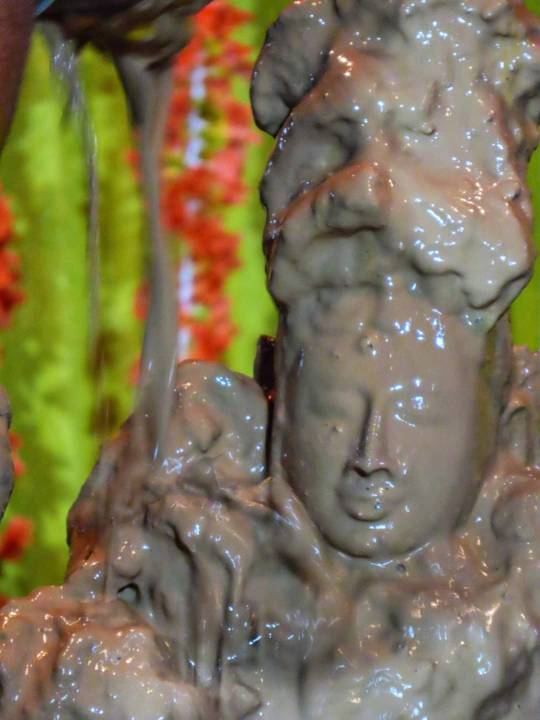
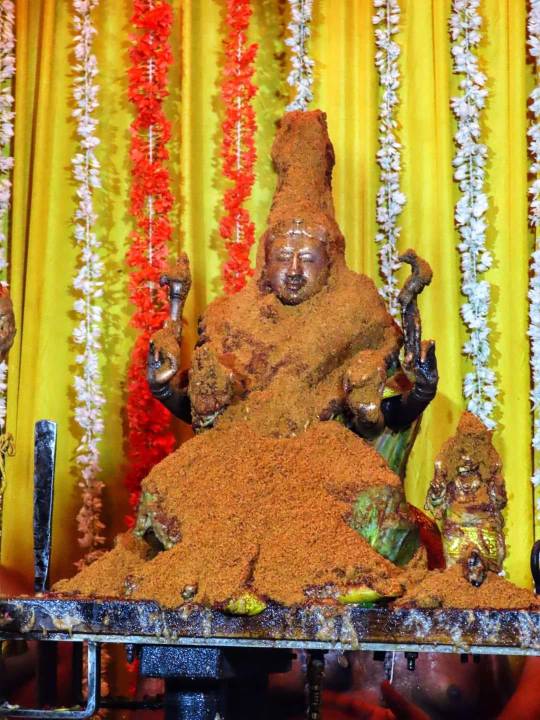




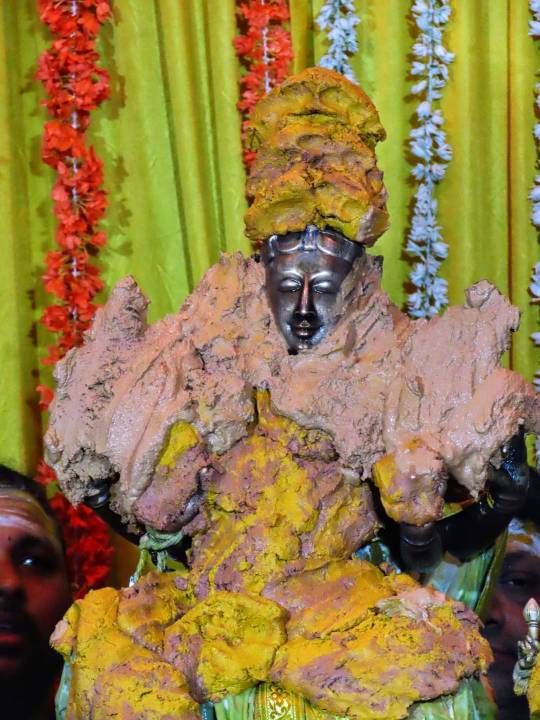

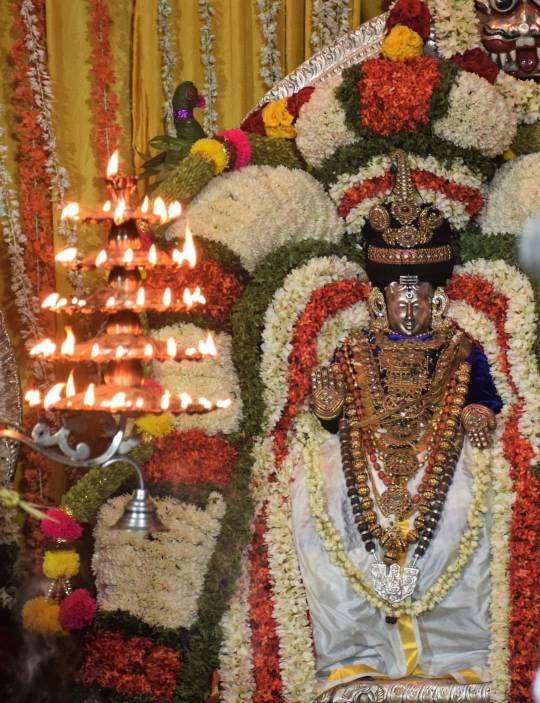
7 notes
·
View notes
Text
Hijra (South Asia)
Hijra (Arabic: ہیجڑا) is a south asian subcultural identity for transgender women, transvestites (MTF), androgynous male, intersex & non-binary folks. Many Hijras lives in well-organized communities, led by a guru (leader) in Bangladesh, Pakistan, India & some parts of Nepal. Traditionally, hijras are recognized as a “distinct gender” which is different from the normative male & female genders. Most of them are assigned “male” at birth, while a small number of hijras are born intersex and later develop a feminine gender identity or gender ambiguity. Hijras usually present themselves in feminine attire, use feminine names & pronouns for themselves. Some hijras may present themselves in masculine outfits, may use masculine names or vice-versa. Both Izak & Hijragaan are equivalents of the term “Hijra” in Afghanistan. Afghani vernacular term Izak refers to eunuch or people of ambiguous gender/sex. Izak is also used as a slurr against LGBTQI+ community.
Hijra Culture
Hijras has their own traditions, rituals, cults, language & festivities. Hijras typically earn a living through various means, including participating in toli–badhai (ritual blessings), collecting alms, begging, prostitution, dancing & singing at different occasions. These activities serve as common sources of income within the hijra community. Most of the Hijra communities follows a kinship known as guru-chela or guru-shishyaa. This kinship is based on hierarchal relationships of discipleship among hijras, organizing themselves into different dera/gharanas (house). These dera/gharanas serve as social units, provide a sense of belonging and support to gender-diverse folks. Many hijras try to maintain matrilineal relationships within their communities; these relationships include guru ma or ma (mother), daughter, maasi or mausi (aunty), sister, niece, nani or naniguru (grandmother). In hijra community, gurus are revered as mother, parent, guardian & sometimes brother. Chelas are revered as son or daughter of guru. In hijra community, individuals can become members through an ritual ceremony or reet which is very much common within Hijra community. Many transgendered hijras & kothis do castration, emasculation before joining the community. However, community membership is not solely dependent on genital mutilation.
The governing bodies within the hijra/kinner community play a central role in maintaining their cultural practices and traditions. These governing bodies hold influential positions on decision-making and community affairs within communities. They contribute to the overall structure and organization of the hijra/kinner/third gender communities.
The spiritual status of hijras is publicly acknowledged & accepted as a part of their gender identity, entitling them to attain a spiritual level referred to as “others” non-hijras. Prior to arrival of Islam in South Asia, kinners (hindu hijra folks) were elevated to the status of demi-god in Indian subcontinent. They were believed to possess supernatural powers that could bestow fertility and good luck upon those who sought kinner's blessings. Upon their conversion to Islam, kinners adopted the label “hijra” which means spiritual migration, transformation, transcend, liminality. Hijras became great devotees of Sufi saints, such as Khwaja Gharib Nawaz, Lal Shahbaz Qalaander, Baba Bulleh Shah. Most of the hijra folks incorporated their Hindu beliefs into their practice of Islam after their conversion. They visits Sufi shrines, temples, and mosques, as well as participate in pilgrimages. Muslim hijras also maintain a belief in the Goddess Bahuchara Maa. Bahuchara Maa is patron of hijra, kinner, transgender woman, eunuch, transvestite, kothi communities. She is also known as Mai Nandi in Pakistan.
Kothi
The word Kothi is common across India & Bangladesh. Other local equivalents of Kothi are Durani (Kolkata), Meti (Nepal), Zenana/Zanana (Pakistan). While Kothis are often distinguished from Hijras, they often dress as women and act in a feminine manner in public spaces, even using feminine language to refer to themselves and each-other. Sometimes the term Kothi is regarded as person who play passive or submissive role in homosexual relationships. In India, the term Kothi refers to effeminate homosexuals & transvestite homosexuals who take feminine role in homosexual relationship with Panthi (a south asian term for masculine gay/bisexual/straight man, who dates hijras & kothis). Majority of kothis don't live in intentional communities that hijras usually lives in. Some argued that term “Kothi” is an all-encompassing term for homosexual bottoms, effeminate males, trans-feminines, transvestites, trans woman, who do not conform to societal, normative gender roles. So the term Kothi would include the identity of Hijra, among others.
Religious Practices
Many hijra communities practice a form of syncretism that draws on multiple religions, including islam, hinduism, buddhism, sikhism, etc. Both Indian hindu hijras/kinners and muslim hijras are devotee of Goddess Bahuchara Maa. Majority of gurus in hijra community are muslim in Indian subcontinent. Annually they pay homage to Hazrat Khawaja Gharib Nawaz in Ajmer Sharif.According to Gayatri Reddy, Indian muslim hijras do not practice Islam differently from other muslims. Their religious syncretism doesn't make them any less muslim. Reddy also documents an example of how this syncretism manifests: In Hyderabad of India a group of muslim converts were circumcised, something seen as the quintessential marker of Muslim identity.
Guru-chela system is very similar to Pir-Mureed discipleship of Sufism. In Sufi traditions, a Pir/Guru (spiritual guider) takes on disciples known as Mureeds, forming a deep and spiritual relationship. Some believes that south asian hijras adopted this system of mentorship & spiritual guidance within their own community.
In Pakistan, most hijras do not practice religious syncretism. But they have great tolerance & compassion for other religions. Pakistani hijras are more connected with sufi cultures & Mughal cultures. Some prefers the term Khawaja Sara for themselves instead of Hijra, Khusra. They pay homage to sufi dargahs, pray at mosque or dargah (in male outfit). Hijras also perform Islamic Hajj & Umrah in Mecca, until 2017 when saudi authorities ban religious pilgrimage for transgender & third gender folks.
Hijra Farsi Language
Hijra Farsi/Farsi Kalaam is a secret code language of hijra, khwaja sara, & zennana communities. It is also spoken among non-hijra LGBTQ+ members. Hijra Farsi was originated during the Mughal Era. Hijra Farsi is widely spoken among muslim hijras, khwajasaras & zennanas. Hindu hijras/kinner speaks Gupti language. known as Hijra Farsi, Farsi Kalaam. Some parts of India & in Bangladesh, it is known as Ulti Bhasha.
History
Hijra identity & culture are documented to have evolved during the Delhi Sultanate (1226-1526) and Mughal Empire (1526-1707), where they held positions as guardian of royal harems, court officials, entertainers, servant for elite households, manual laborers, political advisors, etc. They had been guardians of many sufi shrines in medieval era.
Since 19th century, hijras were targeted by British colonial authorities who sought to eradicate them, criminalised them under Section 377 (1860) & Criminal Tribe Act (1870). This encouraged anti-hijra sentiments throughout the Indian subcontinent, the legacies of which continued in later days. As a result, people started to viewing Hijras differently. Beginning in the 1850s with the British Raj, colonial authorities deployed various strategies to eradicate hijras, whom they saw as "a breach of public decency." The British viewed hijras as incapable of "moral transformation" & assimilation and therefore subjected them to eliminatory policies. In 1860, hijras became subjected to Section 377 of the Indian Penal Code which allowed British authorities to prosecute hijras for their sexuality. Even though they were already criminalized under the Section 377, authorities of the North-Western Provinces (NWP) sought to enact a 'Special law' against hijras in 1861.
By 1870, no high-ranking British officials argued against the implementation of special legislation to address the 'hijra problem,' thus solidifying a violent anti-hijra campaign all across the Indian subcontinent. Anti-hijra laws were enacted; whereas a law outlawing castration (a central part of the hijra community, although not required for community membership), crossdressing, community gathering, ritual practices. Hijras were included in the Criminal Tribes Act (1871) and labelled a "criminal tribe", now subjected to compulsory registration, strict monitoring, and stigmatization. Because of economic costs, which were the main impetus behind British colonialism, Hijras and other so-called "criminal tribes" were unable to be collectively sequestered from colonial society.
Furthermore, Child Removal Projects, which had already begun elsewhere in the British Empire, like Colonial Australia with the forced removal of aboriginal children for assimilation into white settler society, were brought to India for all 'criminal tribes' officially in 1911. Child removal was already in de-facto practice against hijras since the passage of the Criminal Tribes Act (1871) to initiate the extermination of hijra communities by preventing initiation, since the dominant colonial narrative was that all trans & intersex children were "kidnapped and enslaved". Researcher Jessica Hinchy notes that the elimination oriented tactics carried out toward hijras during the colonial era were comparable to what Patrick Wolfe called the 'logic of elimination' in British settler colonies, such as the USA and Australia, as well as the anti-joya campaigns executed by Spanish colonial authorities against gender-diverse people centuries earlier in the establishment of New Spain (1535-1821). After the independence, hijras survived these barbaric colonial extermination. But the centuries-old stigma & shame continues as a legacy of British colonialism in modern days. In the late 20th & early 21st centuries, hijras became the subject of more attention, being the focus of numerous news features, films, literature, documentaries, ethnographies, monographs, dissertations. Since the late 20th century some NGOs & rights groups lobbied for official recognition of the hijra community.
Legal Recognition in South Asia
Hijra rights in India:
Hijra community is known by different names in Indian subcontinent.For example: Khusra,Khusaraa,Jankha,Zennani in Punjab; Pavaiyaa in Gujrat;Hinjida in Odisha;Dhurani, Brihonnala,Hijre in West Bengal;Khawajasera in Urdu;Ali,Aravani in Tamil Nadu,Khadra in Sindhi,etc.
Hijra is a pejorative term, most transgenders consider hijra as derogatory & some transgenders does not consider it as a derogatory.Indian transgenders often prefer the term ''Kinner'' for themselves.
In 1994, Hijras were legally granted voting rights as a third sex.Due to alleged legal ambiguity of the procedure,Indian hijras has difficulties accessing safe medical facilities for surgery.In 1998 Shabnam Mausi (a muslim hijra) was elected as India's first transgender MLA.
In April, 2014 Indian Supreme Court recognised hijra,transgender,eunuch, & intersex people as a "third gender" in law.The Court ruled that hijras,transgender people have a fundamental constitutional right to change their gender without any sort of surgery, and called on the Union Government to ensure equal treatment for hijra people.The Court also ruled that the Indian Constitution mandates the recognition of a third gender on official documents and that Article 15 bans discrimination based on gender identity.In light of the ruling,government documents, such as voter ID cards, passports & bank forms, have started providing a third gender option alongside male (M) & female (F), usually designated as "other" (O),"third gender" (TG) or "transgender" (T).
The states of Tamil Nadu and Kerala were the 1st Indian states to introduce a Transgender Welfare Policy.According to the policy, transgender & hijra people can access free sex-reassignment surgery in govt. hospitals (only for Male to Female),free housing,various citizenship documents, admission in government colleges with full scholarship for higher studies,alternative sources of livelihood through formation of self-help groups(for savings) and initiating income-generation programmes (IGP).
On 24 April 2015, the Rajya Sabha unanimously passed the Rights of Transgender Persons Bill, guaranteeing rights and entitlements,reservations in education,jobs,unemployment allowances, pensions,legal aids & skill development for Hijras.It also contained provisions to prohibit discrimination in employment as well as prevent abuse,violence and exploitation of Hijra people.Social Justice & Empowerment Minister Thaawar Chand Gehlot stated on 11 June 2015 that the Union Government would introduce a new comprehensive bill for trans rights in the Monsoon session of Parliament. The bill would be based on the study on trans issues conducted by a committee appointed on 27 January 2014.According to Thaawar Chand Gehlot, the Government sought to provide trans & hijra people with all rights and entitlements currently enjoyed by scheduled castes & scheduled tribes.
The Transgender Persons (Protection of Rights) Bill,2016, which was initially introduced to Parliament in August 2016, was reintroduced to Parliament in late 2017. Some LGBTQ+ & hijra activists have opposed the bill because it does not address issues such as marriage,adoption & divorce for trans people.It was passed by the Lok Sabha on 17 December 2018, with 27 amendments, including a controversial clause prohibiting hijras from begging.
In April 2017, the Ministry of Drinking Water and Sanitation instructed states to allow transgender people to use the public toilet of their choice.In October 2017, the Karnataka Government issued the "State Policy for Transgenders, 2017", with the aim of raising awareness of transgender people within all educational institutions in the state. Educational institutions will address issues of violence & discrimination against trans people.
On 28 November 2017, N. Chandrababu Naidu, the Chief Minister of Andhra Pradesh, announced the enactment of pension plans for transgender people.On 16 December 2017, the Andhra Pradesh Cabinet passed the policy. According to the policy, the State Government will provide an amount of ₹1,500 per month to each trans person above the age of 18 for social security pensions.The Govt. will also construct Transgender toilets in public places.
In early 2019, the Social Welfare Department of Assam published a draft "transgender policy" with numerous objectives, including providing transgender people access to educational institutions, providing shelter and sanitation for the homeless, raising awareness, and issuing self-identification identity cards.
Hijra rights in Pakistan
In Pakistan hijra & khawaja sara community has a vibrant culture (both are culturally & historically different identities). In Pakistan, Hijras are sometimes referred to as eunuch, shemale, mukhannath, transvestite, khusra, moorat/murat, khadra, chakka, khawaja sara/sera, intersex, teesri zins (third gender), etc. Hijras faces humiliation & violence on daily basis in Pakistan. Surprisingly, they enjoy a certain level of acceptance & respect due to their position in pre-colonial Islamic empires & spiritual status. Their presence in Pakistani muslim society is usually tolerated. Many khawaja sara & hijras called themselves cultural heirs of the Mughal eunuchs & mukhannaths.
Pakistani society has a common myth regarding the hijra that they are born with congenital conditions, sexual ambiguities & they are incapable of procreation. In 2009, the Pakistan's Supreme Court officially recognized hijra's gender. The landmark ruling stated that as citizens they were entitled to the equal benefit from the federal and provincial governments' financial support schemes. In 2010, the court ordered the full recognition of the hijra/khawaja sara community, including the provision of free medical & educational facilities, microcredit schemes and job quotas for hijras in every government department. But court did not say anything about their protections from discrimination in public services or housing.
On 8 May 2018, the National Assembly of Pakistan passed country's first historic Transgender Person (Protection of Rights) Act, 2018 (مُتَجَنَّس افراد کے لیے (تحفظ حقوق) قانون 2018ء). Transgender Person Act ensure the right of self-identification of one's gender Pakistani gender diverse people may express their gender according to their own preferences, & they may have their gender identity of choice reflected on their documents (including NICs, passports, driver's licenses,education certificates) The act ensures transgender people's "fundamental rights to inheritance, education, employment, vote, hold public office, health, assembly, and access to public spaces and property.
Hijra rights in Bangladesh
When Bangladesh was under Pakistani rule, the state used to provide pensions to the elder hijra community during their old age. This subsidy was initially continued after Bangladesh gained independence, but was later discontinued. In November 2013, Bangladesh officially recognized Hijras as a third gender. Bangladeshi Hijras are often discriminated, harassed due to public exposure of their ‘inappropriate’ gender & sexual expression which trangresses gender normativity and heterosexual dimensions of muslim society. Despite this, Bangladesh does not have policies outlining measures individuals must undergo to legally change their gender on their official documents,nor is there clarity about who may qualify as a “Hijra”.
A 2013 survey by the Bangladesh's Ministry of Social Welfare showed that, there are 10,000 registered hijras in the country.But some trans activists argued that the actual number of hijras is more than 10,000. In December 2014, the Ministry of Social Welfare invited hijras for the governmental jobs. Some hijras applied for governmental jobs (many of them were trans woman). But later they were humiliated by Social Welfare Department officials during the initial interviews, which were conducted in December 2014. Many reported that they were harassed & asked inappropriate questions about their gender identity & sex life. In January 2015 the health ministry issued a memorandum requesting that “necessary steps are taken to identify authentic intersexual by conducting a thorough medical check-up.” In June 2015, the dozen hijras who were selected from the initial interviews were examined in a government hospital. During the medical examinations, physicians ordered non-medical hospital staff such as custodians to touch their genitals, while groups of staff and other patients observed and jeered — sometimes in private rooms, sometimes in public spaces. Eventually they were identified as Male by doctors. Thus, they lost their jobs. In addition, their photos were published in the newspaper with their real names. Some hijras reported that publication of the photos sparked increased harassment from the general public and economic hardship for hijra individuals.
In July 2015, a hijra named Labannya witnessed the murder of a secular blogger, and helped in the arrest of the criminals. For Labannya's bravery Bangladeshi government announced plans to recruit and enlist hijras as ''Traffic Police.'' In April 2019, Bangladesh allowed the "hijras" to vote under their third gender identity.In that same year, Bangladesh opened its first Islamic school for Hijras. More than 150 students were initially expected to study Islamic and vocational subjects for free.
Hijras in Nepal
A landmark 2007 ruling by Nepal’s Supreme Court ordered the government to end discriminatory practices against the estimated 350,000 people who make up the LGBTQ+ community & paved the way for equal rights legislation. Nepal became the first south asian country to decriminalize colonial penal code section 377. At that same year, Nepal legally recognized Hijra & Methi community as third gender. In 2011 Nepal added third gender category to it national census. However, hijras faced difficulties to change their name & gender.
Since 2015, Nepal authorized a third gender category ''Others'' for passport holders. LGBTQI+ Nepali activists have criticized this step of goverment. Activists advocated for recognition of one's self-identified gender, instead of gender trinary. In 2019, trans activist Rukshana Kapali took an open stand against labeling herself as "third gender". She has taken legal steps to amend her gender identity to "female". On 31 October of 2021, 29 LGBTQ+ organizations, 2 federations and others have collectively proposed a bill regarding gender identity.
List of notable hijras:
Shabnam Mausi - South Asia first hijra & intersex politician
Laxmi Narayan Tripathi - Hijra & LGBTQ+ rights activist
Joya Sikder - Transgender rights activist. She is a pioneer of activist of hijra rights in Bangladesh
Pinky Sikder
Sanam Fakhir - First Pakistani hijra candidate to contest in election
Lubna lal
Parboty Hijra
Boby Hijra/Bobby Hijra
Salma Sheikh
Rani Chaudhury
Sammi Hijra
Khushi Sheikh
Grace Banu
Gauri Sawant
Zoya Khan
Alina Khan
Shehzadi Rai
Bindiya Rana
Almas Boby
Rimal Ali
Maya Jaffer
Zia
5 notes
·
View notes
Text
From a 6-year old child artist to Swiggy Uncle!
This Vadi Bro has come a long way !!
03 May, 2023 I Richa Devesar I FilmyPeople

If you have passion for something and keep on working towards that, you are surely going to get it, one day! Now its up to you whether you call it Destiny or your Dedication…Swiggy Uncle has proved it both ways! How? Lets rewind his journey as an actor and get to know how he did it all?
Naresh Gosain, a mechanical Engineer by profession was passionate about acting since childhood. He started acting on stage when he was just six years old. It took him 50 years to reach where he is today. Hours, days, months and years’ of work could not give him what a 20 Sec Silent TVC did. It was not just a matter of chance that even after doing dozens of serials, hundreds of Street plays, and so many appearances in Big Budget Bollywood movies, he could not get the appreciation he had been looking for but he feels ‘God has been kind to have given me all this at this age because if he had given all this earlier, who knows I might have got vanished from the scene by now.’ Now, that is what we call positive attitude!
Before getting to know the Gulab Jamun Waale Uncle’s journey (as he’s fondly known), let me share few things which I remember of him as a child. In those days, he was acting in Doordarshan Serials Dil Dariya, Doosra Kewal and Phir Wohi Talaash. We felt really proud of the fact that my Maasi’s son is coming on Television. Unlike today, those were the Doordarshan days when everyone was watching the same thing at the same time, unlike today when the audience is segregated.

We are basically a very filmy family and I give all the credit to my Daddy and Mummy for this. Music, movies all this has been part of our lives since the time, I was not even born. So when Babbu Bhaiya (as we call him) got in to acting , we would look forward to hear all Filmy Stories from him. Infact, I got to know about Shahid Kapoor’s existence as a 10 year old when bhaiya was working in the serial Phir Wohi Talaash (way back in 1990) with actress Neelima Azeem who had this very happy-go-lucky , jovial type youthful, college going girl’s character. He told us that she is a 28 year old woman and has a 10 year old son which was unbelievable. We just could not believe that! And yes I do remember his dialogue in one of the episodes which was ‘Kaad diya…..unko kaad diya’ (they have been thrown out).
And now…everyday we are seeing him in new TVCs be it Bisleri, Dr. Fixit, Netmeds, Goldie Masaale and so on. Success did come to him but after giving 50 dedicated years of his life. Does he have grudges or he is smiling the way he smiles while eating Gulab Jamun in Swiggy TVC? Before we ask him about his journey, how about having a look at some of his best TVCs!
Lets rewind and talk to him from where it all started!
When did you first realize that you wanted to act?
It was not that I realized or something. Initially, it just happened, as my father was a theatre actor and a writer too, I would often accompany him during his rehearsals and one fine day he asked me to act..and with that began my acting journey. I acted in a lot of plays as a child artist. And this I’m talking about 1968 when I was hardly six years old and now that I’m talking of my childhood days, I can recall that I got my first award in 1972 in a theatre festival in Delhi which was quite motivating for me in that young age, although I didn’t understand the seriousness of acting that time.
In 70s and 80s, Doordarshan was the only channel we had and coming on Television was not a small thing. What memories do you have of your initial days?
In those days, actors got much more popularity because Doordarshan had the monopoly. If I talk about myself, I was working regularly with DD for various types of shows and family and friends used to appreciate that because it was a big thing back then. It reminds me of an incident, Doordarshan would telecast one Special New Year Show every year which used to have audience just the way we have now in reality shows. So whenever I got a chance to be there in that new year show, as an audience my friends would get very excited..Arrey tujhe dekha tha! And afterwards when I started acting in serials, though in small roles, I always got a positive response from family and friends.
And how and when did acting in Doordarshan happen?
Doordarshan was the only Channel we had back in 70s and 80s and I was lucky enough to have bagged my first Telefilm in the year 1981. In those days, it wasn’t easy to get a break but I got a chance to show my talent when Doordarshan started Morning Transmission somewhere in mid 80s and I did, mostly comedy serials like Hamaare manager, Popat lal Jasoos, Jeena Yahaan Marna Yahaan and few more. Then I happen to meet Director Lekh Tandon who after directing some very big movies like Agar Tum Na Hote, Dulhan Wahi Jo Piya Man Bhaae, Professor, Aamrapali, Jhuk Gaya Aasmaan and so many more, came to Delhi to make serials for Doordarshan. I met him during that time only when he was directing Dil Dariya and Doosra Kewal for Doordarshan.

If I remember it correctly Dil Dariya was Shah Rukh Khan’s debut serial although the one that got aired on TV was Fauji, Right? How was the experience? Any incident of those days you can recall?
Absolutely right! Although I got to play a small role in that serial but as I was involved in production too, I was there on the sets everyday. And you just asked about any incident. So I have an interesting thing to tell…I remember we were shooting for Doosra Kewal. We had to shoot a song and were looking for a particular location so I asked Lekh Tandon ji to shoot the same at my terrace. As soon as we finished the shoot, Shah Rukh said that his serial Circus is going to be telecast just now and he wanted to see it. We all came downstairs and he watched that episode of Circus with my whole family and that too sitting on the floor. He was already a big TV star by then and so humble was he…I offered him chair…but he said ‘No..I am Okey here.’ And we were all very friendly with each other be it Shah Rukh or other actors like Arun Baliji, Vinita Malikji and Alka Amin (who was seen in Kedarnath as Sushant Singh Rajput’s mother) and I also remember that Arun Bali ji and Vinita Malik ji were the highest paid actors of this serial.
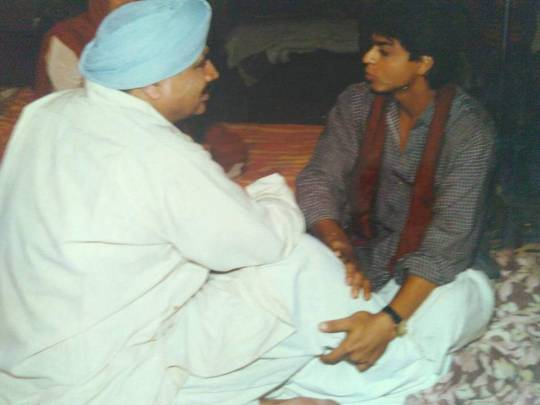
So, the shooting of all these serials was being done in Delhi only and did you continue with theatre also while doing DD serials?
While I was working in DD serials, I was also doing Public Awareness Campaigns because in those days, we used to have lots of such Govt campaigns running on Doordarshan. I continued doing theatre too but this time it was Ramleela and starting from year 1993, I continued playing Kumbhkaran for over 25 years at the Ramleela of Model Town 2, New Delhi. Then in the year 2000, I started doing Street Plays for private as well as Govt Sector and these kept me busy for years.
When did you first come to Mumbai for an acting assignment? What was that about? And which directors you worked with, initially?
I went to Mumbai for the first time in 1989. It was for the shooting of a TV serial called Sadbhaavna again for Doordarshan which was directed by Raj Tilakji who had already directed films like Mukti starring Shashi Kapoor, Sanjeev Kumar and Vidya Sinha and 36 Ghante starring Raj Kumar, Sunil Dutt and Mala Sinha and many more. After doing Sadbhavna, I started coming to Mumbai frequently. Although it was one scene or two and the first movie I did was Manorama Six Feet Under. Then I got a chance to work with Subhash Ghai ji in Kanchi.
youtube
Rajat Kapoor was another director, I got a chance to work with in the movie Aankhon Dekhi. Then Dibaakar Banerjee..with whom I worked in Oye Lucky Lucky Oye, then Vicky Donor happened with Shoojit Sarkar. Infact, I was in all 3 projects of Mirzapur Director Gurmmeet Singh - What The Fish, (in which I had a good role but unfortunately the film didn’t do well at the box office)Warning and Sharaafat Gai Tel Lene and years later I got a chance to work with him in Mirzapur too. Roles were small but good thing was that I was getting work.
What made you decide to permanently move to Mumbai? Did you get family support?
When I was doing serials Chidiya Ghar and Laapata Ganj that time, I seriously thought of moving to Mumbai. It was around 2012 that I started getting regular work…all the films that I just mentioned. But yes, permanently I decided to shift my base here was after Swiggy TVC happened, that has been the biggest turning point in my career. And yes, when I decided to move to Mumbai permanently, my family did support me. And moreover, I could afford to be away from home and give it a shot as my kids were grown up and busy in their own lives and I had my mother and wife Meenu’s full support to go ahead with my decision of giving it a shot.
How did you get Swiggy TVC? Did you have any idea that it would be the biggest turning point of your career? Any big complements you received from your industry friends?
I still remember I was in Delhi doing my awareness campaigns and in between that, I got a call for audition of this Swiggy Ad. I recorded my audition video there only on my mobile and sent it. Although I wanted to get selected but wasn’t sure. But I was selected and there I was shooting for that Ad which changed my life and there has been no looking back since then.
I got lot of popularity because of the Swiggy campaign. The thing is that nowadays the audience is divided..in a way that some people watch only movies, some…crime thrillers, some like to watch family shows, some…news but Ad is one thing which everyone watches and it comes on every platform and this Swiggy TVC came during IPL season and that’s the reason it got even more visibility. The Ad campaign really helped Swiggy and their sales increased by 45%.
My friends Vinay Pathak and Saurabh Shukla gave me complements. They said the way you hold your expressions and smile, is amazing. Kya kamaal ki ad ki hai tuney. I have been doing like this for so many years now but the only thing is that when God’s blessings come, things just change and the same thing happened with me.
How easy was it shifting to TVCs? How do you look at the whole thing?
Doing TVCs was not a planned move, first of all. It just happened. The thing is that when you are doing theatre, reaction is instant. One story is told in 2 hours in a film, in a series it takes 10-12 episodes but when it comes to an ad, you have to tell the story in just 15-20 secs which is not an easy thing. I got to learn so much while doing TVCs. On other hand all my experience came in handy when I started doing ads. I have not had any formal training in Acting, but I have hands-on experience of 55 years. Everyday, I am doing something new which is challenging and satisfying at the same time.
You have worked in some Short Films also, how was that experience?
So far working in short films has been one of the best experiences and I enjoyed working in The Honeymooners and Shagun. I am emotionally attached to The Honeymooners, actually. There is whole variety of roles that I am doing now and it is very surprising that at this age I’m doing things that I never thought, I would ever do, especially after crossing 60. Bojh was another short film that I did. Also I did few bigger Ads which had a storyline especially the ones done for Valentine’s Day and Father’s Day.
youtube
You have worked in some Web Series also. Tell us about that experience? And your upcoming projects also?
Yes I have done few Web Series like Mirzapur, Inside Edge, Illegal and few more to come. Tribhuvan Mishra CA Topper is the next Web Series I’m waiting for then there’s one more Jhaansi ka Rajkumar. Plus TVCs are going on. One with Ranbir has just started coming and Vadilal campaign also started recently and after Swiggy Uncle they’ve shown me as Vadi Bro…it has that youthful touch with lots of colours. I’m loving every bit of it.
Your experience of working with actors like Akshay Kumar, Virat Kohli , Anushka, Alia and Ranbir Kapoor?
The experience has been great. They’ve all been very nice. Ranbir Kapoor is one humble actor I have worked with. I had a great time shooting with Virat and Anushka too. One of the ads we did together was about eating and they brought Rajma Chaawal from their home. Since he is also from Delhi I told him it has this typical DIlli-wala taste and we ll enjoyed shooting as well as eating.
youtube
youtube
Do you have any grudges that all this success and fame came your way very late or you are enjoying it?
I am grateful to God. I feel that if I had got success some 20-30 years ago, I might not have been in the industry today. God has really been kind and I have no grudges at all.
How does it feel living your childhood dream?
Although I have been acting for so many years now and I have always given my 100 % whether it was serials or movies or street plays but the kind of stuff I got to do after my Swiggy TVC is something I am really enjoying. I never imagined that I would get such amazing roles to play and trust me God has really been kind and there’s much more to come. Its all God’s grace. I have been working consistently for last 50 years but got showered with all the name and fame now and its all God’s blessing.
I would personally recommend you all to watch these two Festival Spl TVCs and you will have an idea how good Swiggy Uncle is with his facial expressions.
youtube
youtube
#swiggy#bollywood#Naresh Gosain#Actor#indian cinema#tv commercial#RanbirKapoor#ranbirkapoor#FilmyPeople#Youtube#filmypeople#television#doordarshan
2 notes
·
View notes
Text

🎉我們開始体验
永生的科学 –Pacchai Pattini Vratham ‼‼
(灵性斋戒)
🎁帮助你显化印度教长寿的方式,你將有靈性能力的提升!
2023年3月12日——4月9日
🧐什么是Pacchai Pattini Vratham(斋戒)?
🎈每年,泰米尔马西月的最后一��星期日都要庆祝马西节(maasi festival)一直到泰米尔泛古尼(panguni)月的最后一个星期日结束。mariamman女神(Devi mariamman)是无上母神(parashakti)(宇宙女性意识)的显灵,在这段时间里,为了她的信徒的福祉,要遵守一个28天的斋戒(一种特殊的饮食养生法),被称为pacchai pattini vratham。
联繫凯拉萨华人世界的方式:
微信:14595087(Ma Kailasa)
联繫凯拉萨台湾的方式:
台灣凱拉薩
Line ID : kailasa_taiwan
phone:0919-132331
phone:0910-880195
#凯拉萨
#MahaParamashivoham
#SHRIKAILASA
#尼希亚南达
#吠陀
#财富
#Nithyananda
#ParamahamsaNithyananda
#Kailasa
#灵性斋戒
#Pacchai Pattini Vratham
1 note
·
View note
Photo

我們開始体验
永生的科学 –Pacchai Pattini Vratham ‼‼
(灵性斋戒)
帮助你显化印度教长寿的方式,你將有靈性能力的提升!
2023年3月12日——4月9日
🧐什么是Pacchai Pattini Vratham(斋戒)?
每年,泰米尔马西月的最后一个星期日都要庆祝马西节(maasi festival)一直到泰米尔泛古尼(panguni)月的最后一个星期日结束。mariamman女神(Devi mariamman)是无上母神(parashakti)(宇宙女性意识)的显灵,在这段时间里,为了她的信徒的福祉,要遵守一个28天的斋戒(一种特殊的饮食养生法),被称为pacchai pattini vratham。
联繫凯拉萨华人世界的方式:
微信:14595087(Ma Kailasa)
联繫凯拉萨台湾的方式:
台灣凱拉薩
Line ID : kailasa_taiwan
phone:0919-132331
phone:0910-880195
#凯拉萨
#MahaParamashivoham
#SHRIKAILASA
#尼希亚南达
#吠陀
#财富
#Nithyananda
#ParamahamsaNithyananda
#Kailasa
#灵性斋戒
#Pacchai Pattini Vratham
0 notes
Video
~齋戒學員分享~
女神加持房屋出租 牙痛消失
永生的科学 –Pacchai Pattini Vratham ‼‼(灵性斋戒)
🎁印度教长寿的方式,靈性能力的提升!
🎈每年,泰米尔马西月的最后一个星期日都要庆祝马西节(maasi festival)一直到泰米尔泛古尼(panguni)月的最后一个星期日结束。mariamman女神(Devi mariamman)是无上母神(parashakti)(宇宙女性意识)的显灵,在这段时间里,为了她的信徒的福祉,要遵守一个28天的斋戒(一种特殊的饮食养生法)
联繫凯拉萨华人世界的方式:
微信:14595087(Ma Kailasa)
联繫凯拉萨台湾的方式:
台灣凱拉薩
Line ID : kailasa_taiwan
phone:0919-132331
phone:0910-880195
0 notes
Photo
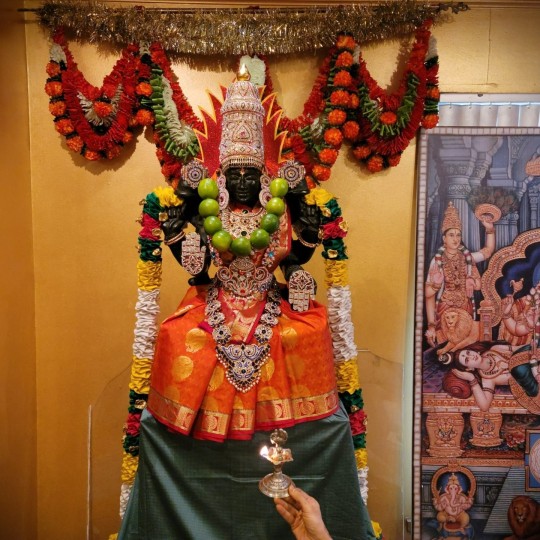
BLESSINGS FROM DEVI MARIAMMAN! Mahamari Amman represents the self-purification of the entire Prakriti (nature). Devi Mahamariamman, manifestation of Parashakti (Cosmic feminine consciousness) observes a 28-day fast (a special dietary regimen) during the Maasi festival called the Pacchai Pattini Vratham. Fasting is a purifying process. The cosmic Mother fasts to purify the entire Prakriti (nature). By observing this fast we have an opportunity to purify ourselves along with the Cosmic Mother. Read more on Pacchai Pattini Vratham and join us in the celebration - https://ift.tt/5HTDlex #samayapuram #mahamari #nithyananda #kailasa #hinduism #mariamman — view on Instagram https://ift.tt/PEh6dta
0 notes
Photo

🌷Are you looking for a way to purify your body, relieve #stress, and strengthen your immune system? Look no further than the Pacchai Pattini Vratham, a 28-day fast observed annually by Devi Mahamariamman during the Maasi #festival. Not only does this #fasting regimen spiritually heal physical and #psychological ailments, it also provides an opportunity for you to #purify yourself alongside Mahamari's purification of nature. By undertaking this fast, you can create a space for Paramashiva and Parashakti to #manifest, receive #spiritual #healing for the world, prepare yourself to receive the #science of #immortality, and receive #blessings to #protect against #diseases. ✔️ Don't miss out on the chance to purify your body and mind while connecting with the divine. Join the Pacchai Pattini Vratham and experience the benefits for yourself. 🌷Pacchai Pattini Vratham DATES: 12 MARCH - 9 APRIL 2023 Mahamari, Parashakti is the self purification of this whole Prakriti - nature. Fasting is a purifyng process for every individual! ✔️ Register today: https://events.kailaasa.org/ppv/ #fastingbenefits #intermittentfasting #fastingdiet #healthylifestyle #healthymind #willpower #rejuvenate #jnanayoga #resetyourmind #advaita #hindufestival #shakti #hindutemple #hindus (at San Diego, California) https://www.instagram.com/p/CpsV-a5rrFu/?igshid=NGJjMDIxMWI=
#stress#festival#fasting#psychological#purify#manifest#spiritual#healing#science#immortality#blessings#protect#diseases#fastingbenefits#intermittentfasting#fastingdiet#healthylifestyle#healthymind#willpower#rejuvenate#jnanayoga#resetyourmind#advaita#hindufestival#shakti#hindutemple#hindus
0 notes
Text
Paps calls Shaheen Bhatt "Maasi ji" at Manish Malhotra's Diwali party, she smiles sweetly in response - Times of India
Paps calls Shaheen Bhatt “Maasi ji” at Manish Malhotra’s Diwali party, she smiles sweetly in response – Times of India
Shaheen Bhatt, the older sister of Alia Bhatt cuts a happy picture these days. Visibly excited to become an aunt, Shaheen was recently seen at Manish Malhotra’s star-studded Diwali party, where paps addressed her as “Maasi ji”. Hearing this Shaheen let out the widest grin while making her way inside the venue.
Dressed in a olive green ensemble, Shaheen looked ever bit in the festive mood with a…

View On WordPress
0 notes
Text
அருள்மிகு அரங்கநாத சுவாமி திருக்கோயில் ஸ்ரீரங்கம்
நம்பெருமாள் உபய நாச்சியார்களுடன் திருச்சிவிகையில்
திருப்பள்ளி ஓடம்
மாசி தெப்பத்திருநாள்
நாள் 7 மாலை
நெல் அளவை
திருவீதி உலா
Srirangam temple maasi festival measuring the rice output
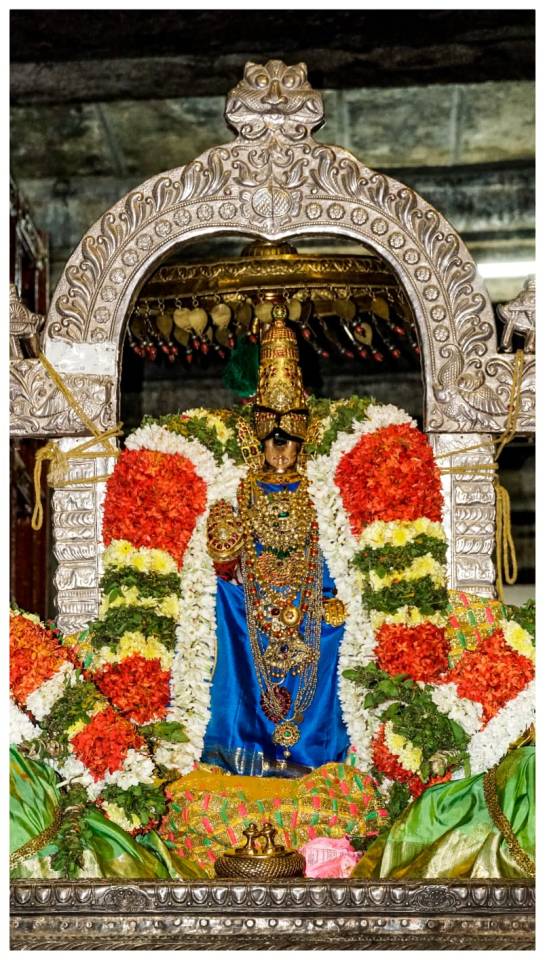

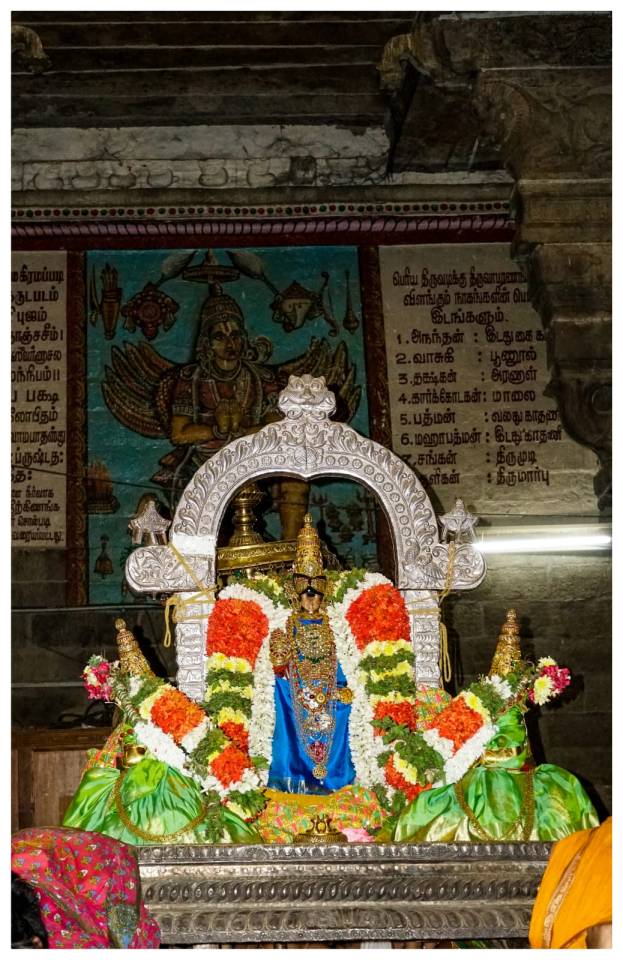
4 notes
·
View notes
Text

Maasi
6 notes
·
View notes
Photo
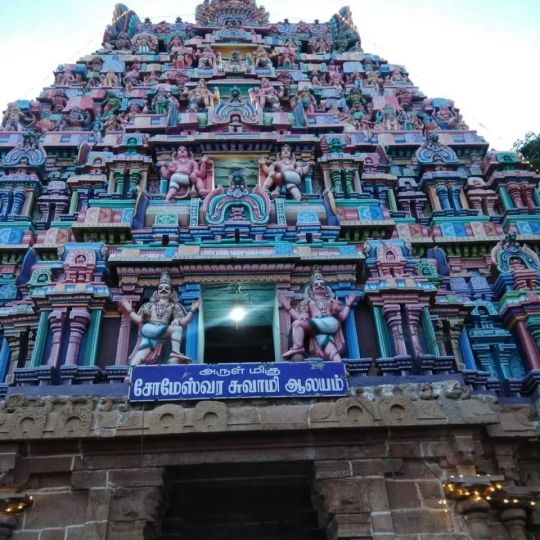
#suprabhatham 🙏With #goddess #somasundari #ambal Samaetha #sri vyaazh #someshwar / Sikkesar / #somesara #swami #temple (One Among 12 #shivatemples , Connected With #maasi - #magham #festival ) Thaevara #paadal Petra #sthalam #kumbakonam #tamilnadu #gopuradarshanam 🙏#shrisaivastu . . #lordshiva #omnamashivaya #haraharamahadev # #shivalingam #goviral #templephotography #photography📷 #omnamahshivaya #shivaya #tamizh #ınstagod (at Tamil Nadu) https://www.instagram.com/p/CZ8eTY1vLlt/?utm_medium=tumblr
#suprabhatham#goddess#somasundari#ambal#sri#someshwar#somesara#swami#temple#shivatemples#maasi#magham#festival#paadal#sthalam#kumbakonam#tamilnadu#gopuradarshanam#shrisaivastu#lordshiva#omnamashivaya#haraharamahadev#shivalingam#goviral#templephotography#photography📷#omnamahshivaya#shivaya#tamizh#ınstagod
0 notes
Text
Train to Vrindavan
Here's the first chapter of Krishna x reader fic which you all wanted to read. Reader is named as Bhaishmi here because each time i keep (y/n) i read everything as 'y/n' but you can insert your own name here if you want or read it as Bhaishmi.
Chapter-1
I took a deep breath in and looked at my surroundings. There was a huge rush on the platform. My cousins were accompanying me on a trip to Vrindavan to celebrate Holi. Luckily, our school finals were over before Holi, and we wanted to go out somewhere without our parents accompanying us. My cousin brother, Ranvit had suggested planning for Goa, which we had to cancel before we even went to our parents to ask for permission.
Why? Do you even need a reason? Which Indian family would allow their sixteen-year-old children to go to Goa? My sister, Bhumi, only a year younger than me, suggested going to Vrindavan to celebrate Holi. The various festivities would satiate Ranvit’s adventurous side, and our parents were more or less impressed by our decision to go to a sacred religious site at this age.
Bhumi and I had binge-watched many documentaries on the grand celebration of the festival at Vrindavan. We knew we could never get a YJHD Holi celebration ever in our lives, but we could get to experience Vraj ki holi! Ranvit initially was against it, but the idea of Lathmaar holi caught his interest and he agreed.
“The train shall arrive within the next ten minutes,” declared Bhumi, her eyes glued to her phone.
Ranvit snatched her phone in his hands and kept it in his pocket. “Now, young lady, you have been staring at the phone for quite some while. You will get it back once we board the train.”
Bhumi glared daggers at him and huffed. “Excuse me! I am the one arranging all this, so I need to be kept updated about the train status.”
I chuckled and waved my phone at her. “I have Ixigo too, Bhumi. So you don’t have to worry so much. Besides, we are sixteen! We won’t be lost and certainly will not miss our train.”
Ranvit muttered something under his breath, causing her to glare at him even more.
“Hand me my phone now!” She demanded.
“Can’t hear you. Speak a bit louder.” Ranvit liked to pester Bhumi too much. All brothers love doing that. But both the brother-sister duo loved each other as fiercely as they fought and troubled each other.
A loud whistle diverted their attention from their fight. Our train had arrived and would halt within the next two minutes. Ranvit gave back Bhumi’s phone and held his suitcase. Bhumi and I took hold of our belongings and walked ahead to find our compartment.
We easily found our assigned coach and berths. The three of us sat for a while and looked outside the window. I looked at the people outside. Vendors were selling their goods, children asking their parents for snacks, people with laptop bags and large suitcases.
My eyes drifted towards Bhumi who was on a call with her mother, my maasi, to inform her that we had comfortably boarded the train. I texted my mother the same, and she replied to me with the thumbs up emoji and ‘ok.’
Ranvit was seated on the side berth. He kept his suitcase below his seat and removed his shoes and stretched his legs on the seat. Bhumi and I had the lower and middle berth on the left side. I was waiting for Bhumi to end her call with maasi so we could keep our luggage together.
“Haan mummy, we won’t accept food from strangers. I will take Bhaishmi with me when I need to use the bathroom at night and also make sure that Ranvit doesn’t gobble all the aloo parathas. Okay?” Bhumi rolled her eyes at me while Ranvit and I shared amused looks with each other.
Ranvit shook his head and snatched the phone again. “Mummy, don’t worry. I am ending the call now. We will call back after we get there.”
Bhumi clapped her hands and looked at me. She exclaimed, excitement evident in her tone. “Oh my God! I can’t believe this. We are really travelling by ourselves!”
“Chal chal, let’s first keep our luggage aside and then we will pinch ourselves to check if this is a dream or not,” I said and moved my bag towards the window seat and placed my suitcase under my seat. Bhumi kept her luggage beside mine and sat on the opposite berth.
She looked at Ranvit who had his earphones plugged in, and his fingers busy texting someone. There was a small smile on his face, and we quickly understood who was behind his smile.
I stretched my arms and sighed. I was really out on a trip by myself with these two. I knew that we weren’t on some adventurous journey, but even this excited me. Covid took away two years from me. I wanted to enjoy every second of this trip before joining school for the new session.
“God, where did the two mischief mongers go? Weren’t they just behind you, Arjun?”
Tagging: @lil-stark @redirection04
(Well this is my first time writing a story. It may not be very good so please bear with me.)
#krishna fics#mahabharat#fan fiction#mahabharat fics#modern au#yeah so here's the first chapter#hope you all like it#krishna x reader
122 notes
·
View notes
Text

🎉我們開始体验
永生的科学 –Pacchai Pattini Vratham ‼‼
(灵性斋戒)
🎁帮助你显化印度教长寿的方式,你將有靈性能力的提升!
2023年3月12日——4月9日
🧐什么是Pacchai Pattini Vratham(斋戒)?
🎈每年,泰米尔马西月的最后一个星期日都要庆祝马西节(maasi festival)一直到泰米尔泛古尼(panguni)月的最后一个星期日结束。mariamman女神(Devi mariamman)是无上母神(parashakti)(宇宙女性意识)的显灵,在这段时间里,为了她的信徒的福祉,要遵守一个28天的斋戒(一种特殊的饮食养生法),被称为pacchai pattini vratham。
联繫凯拉萨华人世界的方式:
微信:14595087(Ma Kailasa)
联繫凯拉萨台湾的方式:
台灣凱拉薩
Line ID : kailasa_taiwan
phone:0919-132331
phone:0910-880195
#凯拉萨
#MahaParamashivoham
#SHRIKAILASA
#尼希亚南达
#吠陀
#财富
#Nithyananda
#ParamahamsaNithyananda
#Kailasa
#灵性斋戒
#Pacchai Pattini Vratham
0 notes
Video
~齋戒學員分享~
女神加持房屋出租 牙痛消失
永生的科学 –Pacchai Pattini Vratham ‼‼(灵性斋戒)
印度教长寿的方式,靈性能力的提升!
每年,泰米尔马西月的最后一个星期日都要庆祝马西节(maasi festival)一直到泰米尔泛古尼(panguni)月的最后一个星期日结束。mariamman女神(Devi mariamman)是无上母神(parashakti)(宇宙女性意识)的显灵,在这段时间里,为了她的信徒的福祉,要遵守一个28天的斋戒(一种特殊的饮食养生法)
联繫凯拉萨华人世界的方式:
微信:14595087(Ma Kailasa)
联繫凯拉萨台湾的方式:
台灣凱拉薩
Line ID : kailasa_taiwan
phone:0919-132331
phone:0910-880195
#凯拉萨
#MahaParamashivoham
#SHRIKAILASA
#尼希亚南达
#吠陀
#财富
#Nithyananda
#ParamahamsaNithyananda
#Kailasa
0 notes
Photo

🚩மதுரை அருள்மிகு மீனாட்சி_சுந்தரேசுவரர் திருக்கோயில் மாசித்திருவிழா இன்று 7ம் நாள் சுவாமி, அன்னை மீனாட்சி நந்தி_வாகனம், யாளி_வாகனம் 🚩Madurai Sri Meenakshi_Sundareswarar Swamy Temple Maasi festival today day 7 evening swamy Ambal Procession on Nandhi Vehicle & Yaalii vehicle (at Madurai Meenakshi Amman Temple) https://www.instagram.com/p/CaAJrPbPrjp/?utm_medium=tumblr
2 notes
·
View notes